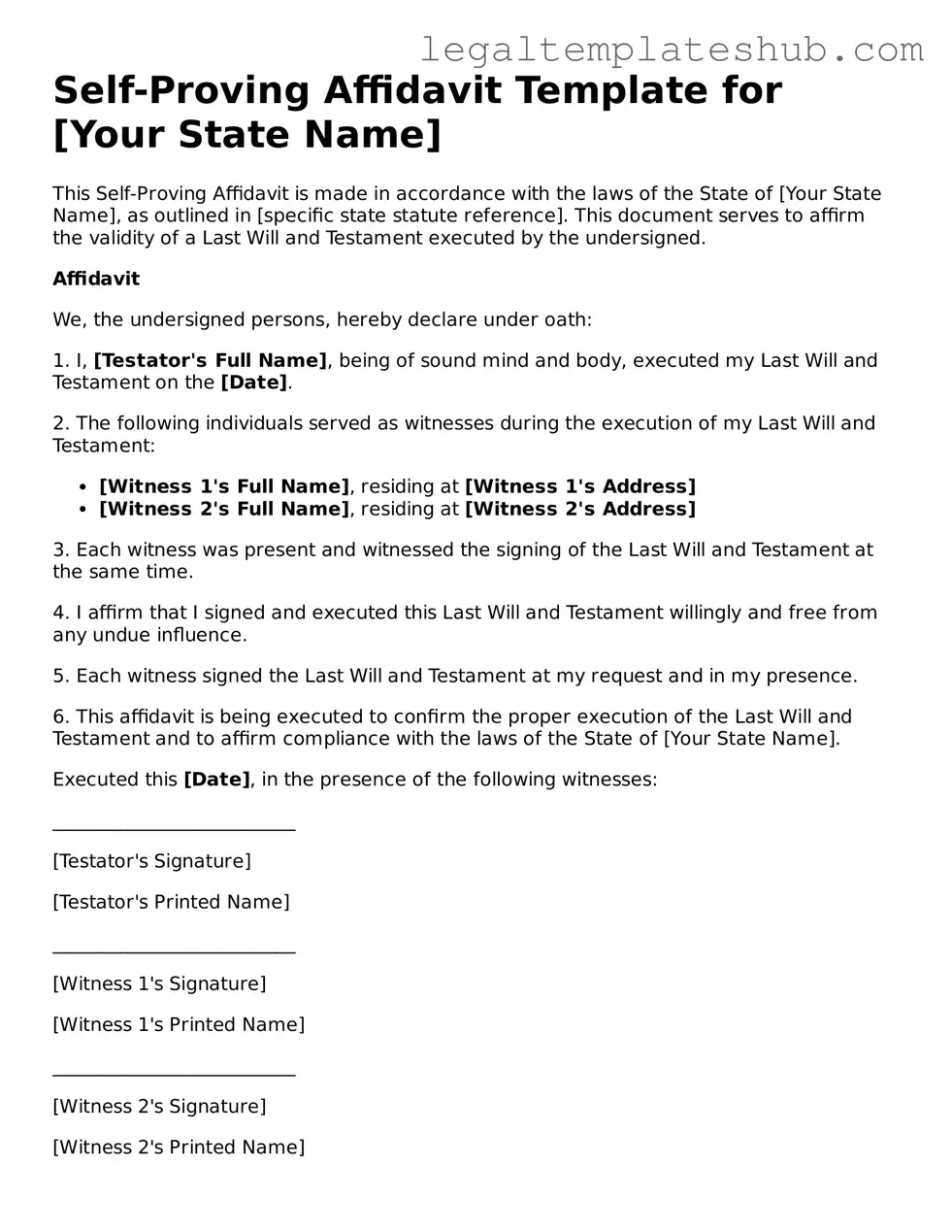Printable Self-Proving Affidavit Template
A Self-Proving Affidavit is a legal document that allows a testator's will to be validated without requiring witnesses to testify in court. This form serves as a way to simplify the probate process, providing assurance that the will was executed properly. For those looking to streamline their estate planning, filling out the Self-Proving Affidavit can be a beneficial step; click the button below to get started.
Access Editor
